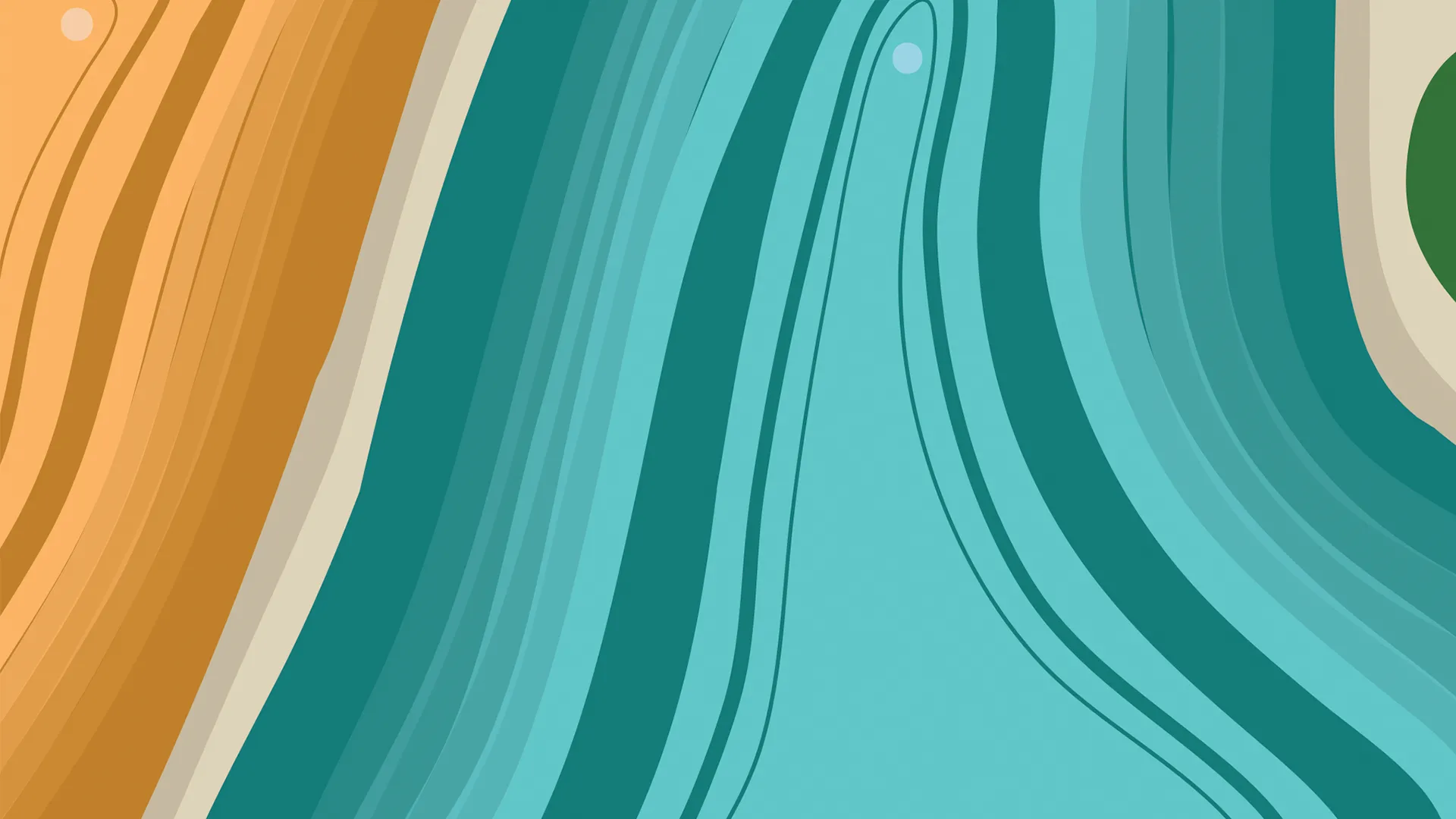Intellectual property (IP) rights help to protect the value of creative work. Intellectual property is separate from physical property.
For example, an artist who paints an original artwork may choose to sell the physical property (the physical painting) but keep the intellectual property rights in the artwork.
It is essential for artists, creatives and organisations to understand IP rights so they can protect the value of their creative work. Protecting creative assets helps ensure creators and rights holders are paid and credited fairly.
The most common types of IP rights include:
- copyright
- moral rights
- trademarks, design rights and patents.
Intellectual property can be owned, licenced and used in accordance with the law and as agreed through contracts.
Intellectual property rights may be owned by:
- the individual who created the work, or
- other individuals, businesses or employers.
For employees — Intellectual property created by employees in the course of their employment is owned by the employer unless it is otherwise agreed in the employment contract.
For independent contractors — Intellectual property created by an independent contractor is owned by the contractor unless it is otherwise agreed in the contract.
In the creative industries, intellectual property includes:
- literary and artistic works (writing, music, visual images and moving images)
- performances of performance artists
- designs
- business names and logos
- content
- processes
- digital files
- expressions of ideas.
There are laws and rules that deal with intellectual property rights in Australia and internationally.
Some rights exist automatically and some rights need to be registered.
Intellectual property rights can also be infringed. There is information on this page about intellectual property infringements.
Copyright
Copyright is an automatic right
Copyright protects an individual’s original expression of ideas. It is an automatic IP right – it is free and does not need to be registered. It protects the original expression of ideas from being used without the creator’s permission. Copyright owners have the right to reproduce the work.
Copyright does not stop another person from producing the same idea independently.
Copyright material is an original expression of ideas or concepts that are documented
When an original idea or creative concept is documented (e.g. painted, electronically written down, put on paper) it is automatically protected.
Examples of copyright material:
- an original melody written on sheet music
- original lyrics
- an original painting on a canvas (not the physical canvas, but the painting itself)
- the original words of a story written down
- a recording of a song
- the visual image taken by a photographer
- a script of a play
- drawings or plans.
As soon as these artistic works are documented or put into material form, copyright exists. The creator of those artistic works owns the copyright in those works. This means, someone else cannot use those works without the permission of the creator.
Copyright can be transferred or assigned
Creatives can agree to transfer or assign their copyright. This means that someone else will own the copyright to work they created.
Creatives can agree to do this under a contract.
It is important to think about copyright when negotiating a contract.
In practice:
Sam composes music and sells sheet music
Sam composes piano music. She composes an original song and writes it down. She automatically owns the copyright to the music. She sells the sheet music through her online store.
People who buy the sheet music can learn and play the music. They cannot reproduce by scanning or copying the sheet music without Sam’s permission.
Zoe takes photos and sells digital and printed copies
Zoe is a landscape photographer. She automatically owns the copyright in the original visual images she takes. She sells digital image files and printed photographs at art markets.
People who buy her images cannot sell or use them commercially without Zoe’s permission.
Lucy buys one of Zoe’s images and reproduces it by printing it on t-shirts, which she sells on Etsy, without Zoe’s permission. Lucy has infringed Zoe’s copyright.
Finn is employed to design logos
Finn is a graphic designer. He is employed by a creative agency to design logos for clients.
When he became an employee, his employer automatically became the copyright owner of Finn’s creative work that he creates for and during his employment.
Copyright lasts for a long time
In Australia, copyright lasts for different lengths of time depending on the type of copyright material and whether it has been made public.
The Attorney General’s Department has information about the duration of copyright material.
When copyright expires, the material falls into the public domain and may be freely used.
Keep learning:
Moral rights
Moral rights keep the connection between a creator and their work, even if the artist doesn’t own the work or the copyright in their work anymore.
Moral rights automatically belong to the individual who created the work. They exist separately to copyright and they cannot be transferred or assigned to someone else. Moral rights can be waived.
In Australia, moral rights include:
- the right of attribution
- the right against false attribution
- the right of integrity.
Moral rights automatically start when work is created and generally continue for 70 years after the creator’s death.
The right of attribution and right against false attribution
An individual creator has:
- the right to have their name on work or next to work they created, even if they don’t own the copyright or other IP rights to that work
- the right to be presented as and identified as the creator of the work. This also means that someone else cannot claim to the be the creator of work they didn’t create.
In practice:
A gallery purchases an artwork
The gallery and the artist agree that the gallery will:
- own the copyright in the artwork
- have the right to reproduce the artwork
- can licence it to others and use it in any way they would like.
The artist maintains their moral rights.
Unless the artist agrees to waive their moral rights, the gallery must make sure the artist is identified as the creator of the artwork. To do this, the gallery will make sure the artist’s name appears next to the work whenever it is presented.
The right of integrity
An individual creator of work has the right to protect their work from derogatory treatment.
This means that a creator has the right to stop anything done to the work that harms the creator’s reputation or damages the work.
In practice:
A musician exercises her moral rights
A folk musician self-released an album which became a smash hit.
The hit single is picked up by the United Livestock Union and used as its rallying anthem in lobbying for continuation of live animal exports.
The musician is an animal rights activist and has long advocated against live animal exports, including by publicly supporting fundraisers and campaigns. She did not give the union permission to use her song, and she asks the union to stop using it because she considers that it harms her reputation.
Keep learning:
Trade marks, design rights and patents
Trade marks, patents and design rights are intellectual property rights that only exist when they are formally registered. You can register for them at IP Australia.
Trade marks
Trade marks protect unique, important or distinctive parts of a brand, product or service from others in the market. You can trade mark a business name, logo, phrase, colour, sound, word, picture, packaging, or a bodily movement.
A registered trade mark gives the owner exclusive rights to use, sell, licence and commercialise the thing that has been trade marked.
Learn more about:
- trade marks and other business registrations and trade marks on our website
- what is a trade mark and and how to register them at IP Australia.
Design rights
Design rights protect the overall appearance of a new and distinctive product based on the visual features of that product. Visual features include the shape, configuration, pattern or ornamentation of the product, or a combination of these.
Design rights won’t be approved if a design is too similar in overall impression to another design.
Design rights give the owner the exclusive right to use, sell, licence and commercialise the design for a period of time.
Learn more about design rights and how to apply for them at IP Australia.
Patents
A patent protects new inventions, which includes methods or processes. You cannot patent artistic creations.
A patent gives the owner exclusive right to use, sell, licence and commercialise the invention for a period of time.
Learn more about patents at IP Australia.
Ownership, licencing and use of intellectual property
Intellectual property can be owned, licenced and used by others based in the law and as agreed through contracts. If intellectual property has been created for someone else in an agreement, the contract should set out who owns the copyright.
Ownership — The owner of intellectual property rights is like the owner of a house. Owners have the right to assign or transfer the IP rights to another who will then become the new owner. The owner may use the intellectual property they own in any way they like (subject to moral rights).
Licence — The owner may give someone else permission to use their intellectual property in a licence. Licencing intellectual property allows the owner to keep ownership and allow others to use it in agreed ways (often in exchange for a licence fee or royalty payment).
A licence can be non-exclusive, exclusive or sole. A licence may be transferrable or non-transferable. A licence may grant the licensee permission to sub-licence the intellectual property to others.
Permitted use — Any agreement that allows another party to use intellectual property owned by someone else should detail all the ways they can use it and for how long. For example:
- to reproduce or modify the intellectual property for an agreed purpose
- to commercialise it
- to keep IP confidential
- to create something else.
Intellectual property clauses in contracts should set out:
- who owns the IP created under the agreement (the employer, the contractor, the client)
- who has the right to use the IP commercially
- if, and when, transfer of IP ownership will happen
- if any party can improve or modify the IP, and if this will impact ownership
- confidentiality agreements about IP
- obligations to return copies of IP if or when work ends
- non-competition agreement.
Infringement of intellectual property rights
An infringement of intellectual property rights means that someone has used intellectual property in a way that was not agreed to or authorised by the owner or the licence.
Infringing intellectual property rights can be serious.
Check the contract to see who the owner or rights holder of the intellectual property is and how it has been agreed to be used.
To repair or stop infringing, the person using the IP may need to:
- stop or change how they are using the IP
- credit someone’s work properly
- pay the owner or rights holder money received from using the IP without permission.


